President Concepcion's message for the 27th-anniversary celebration
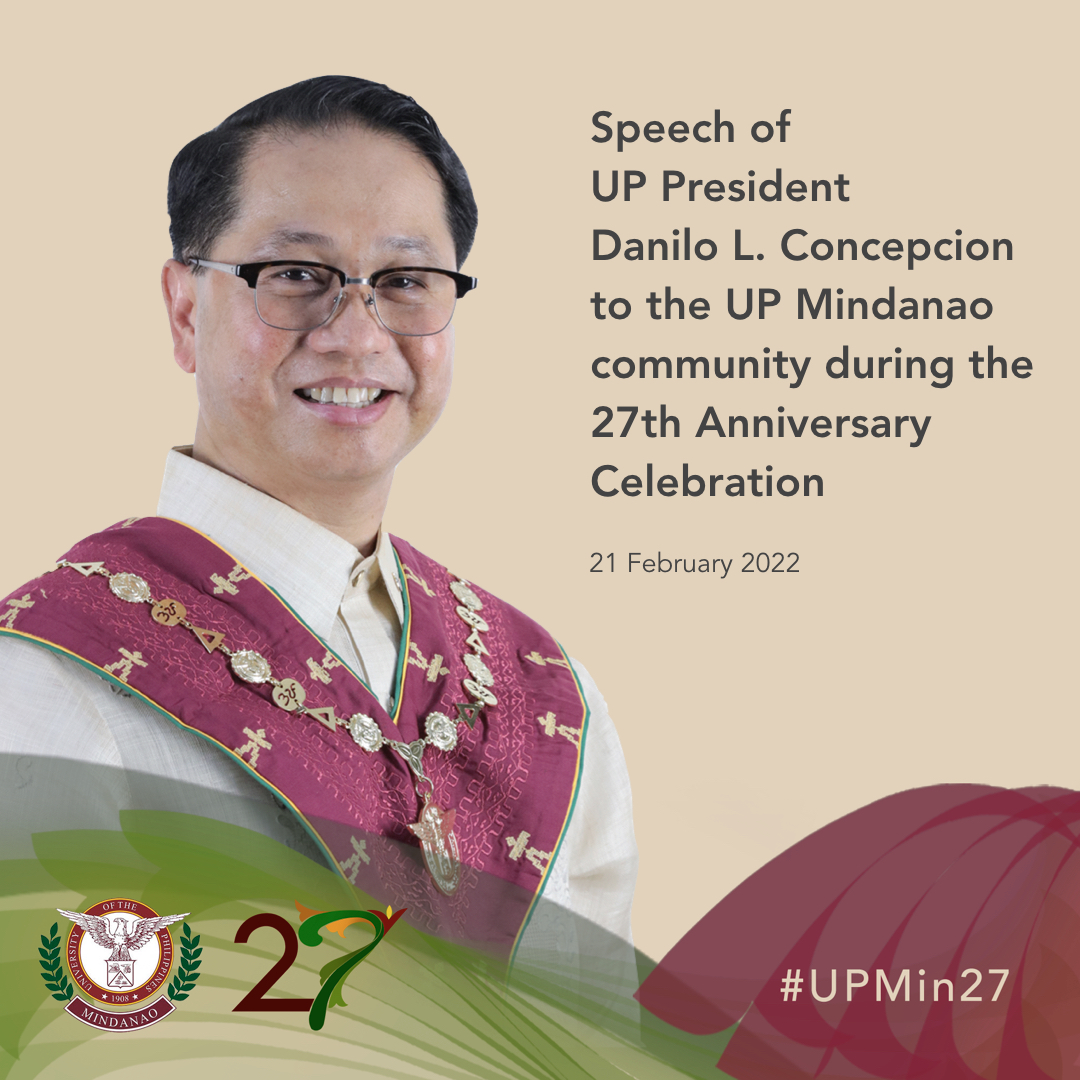
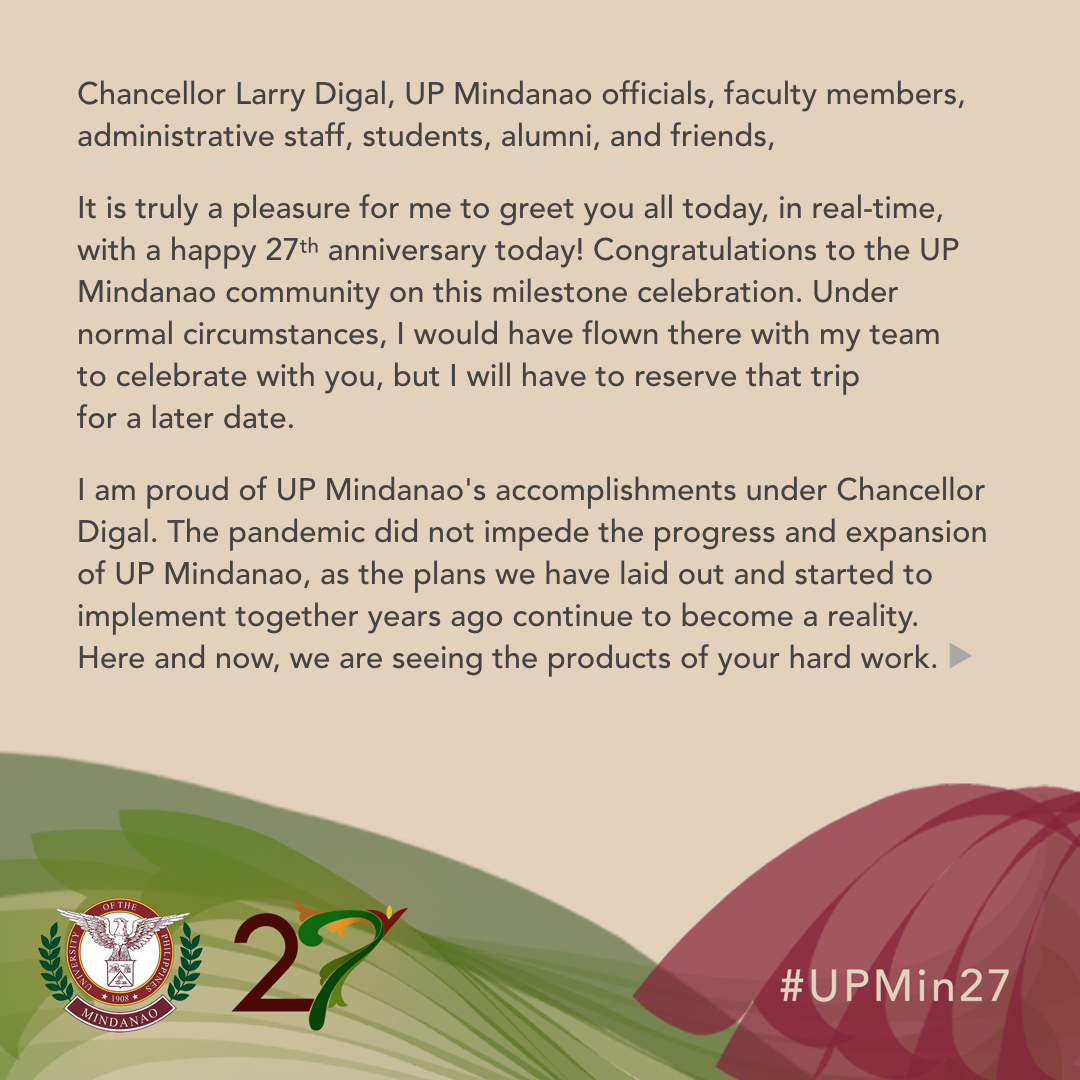 |
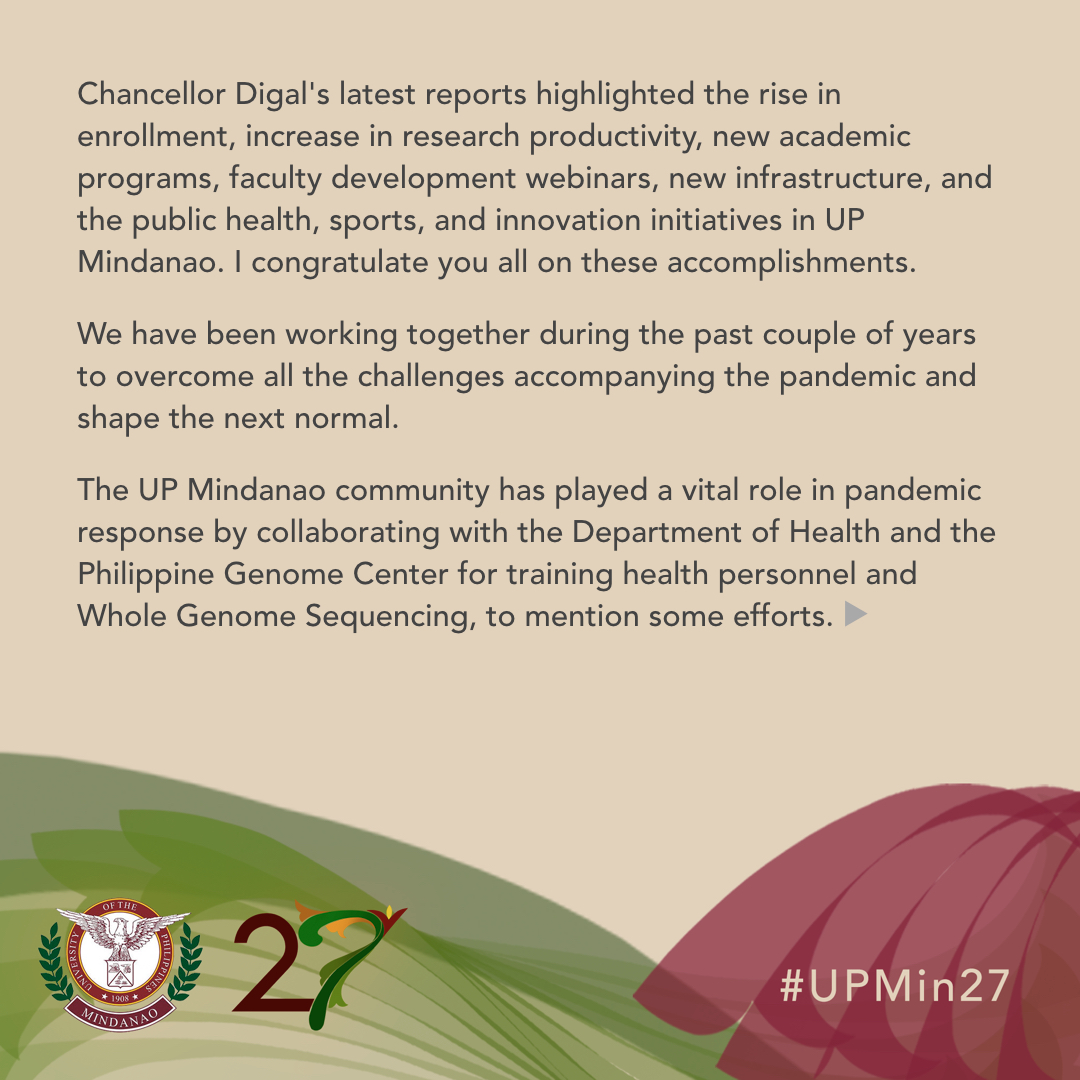 |
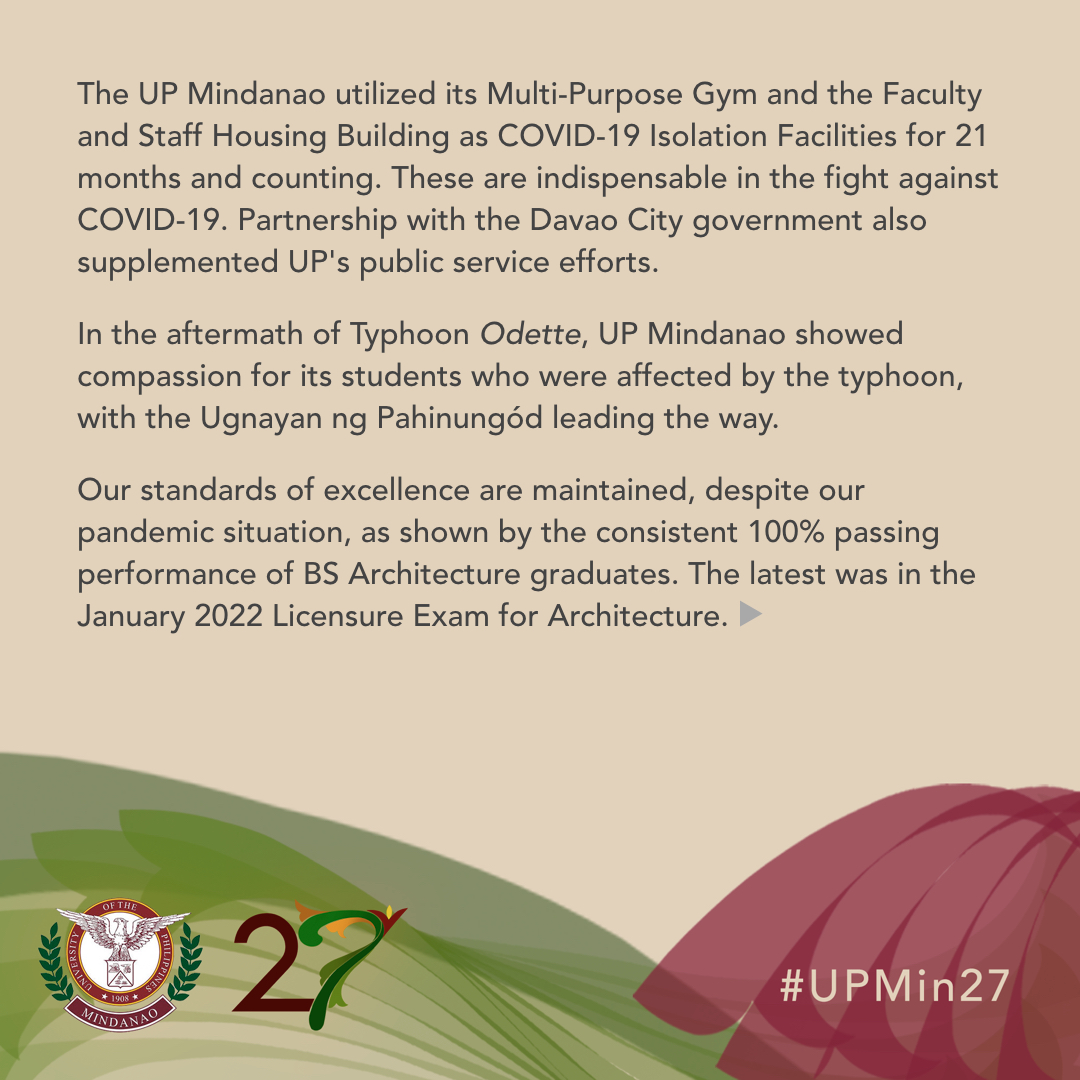 |
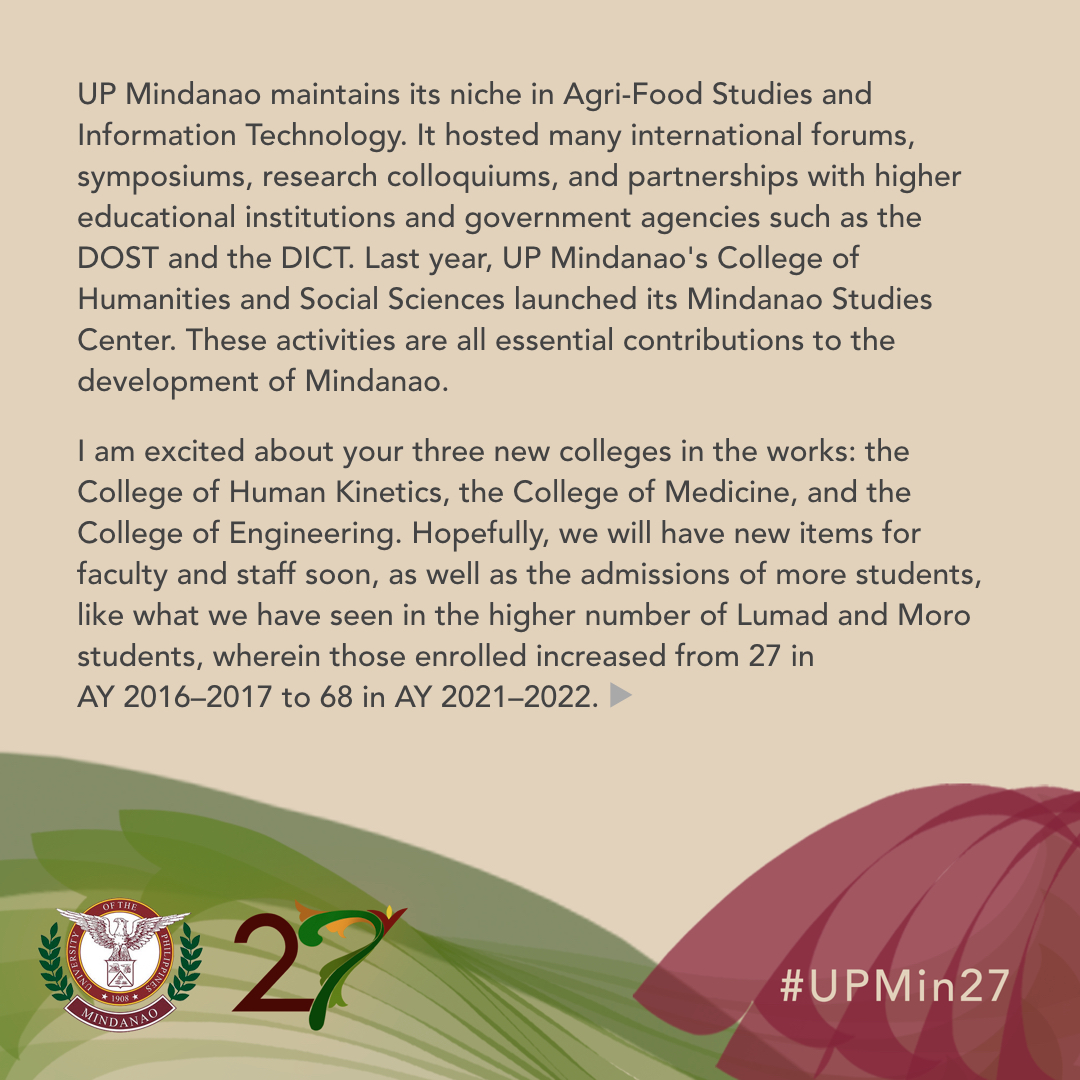 |
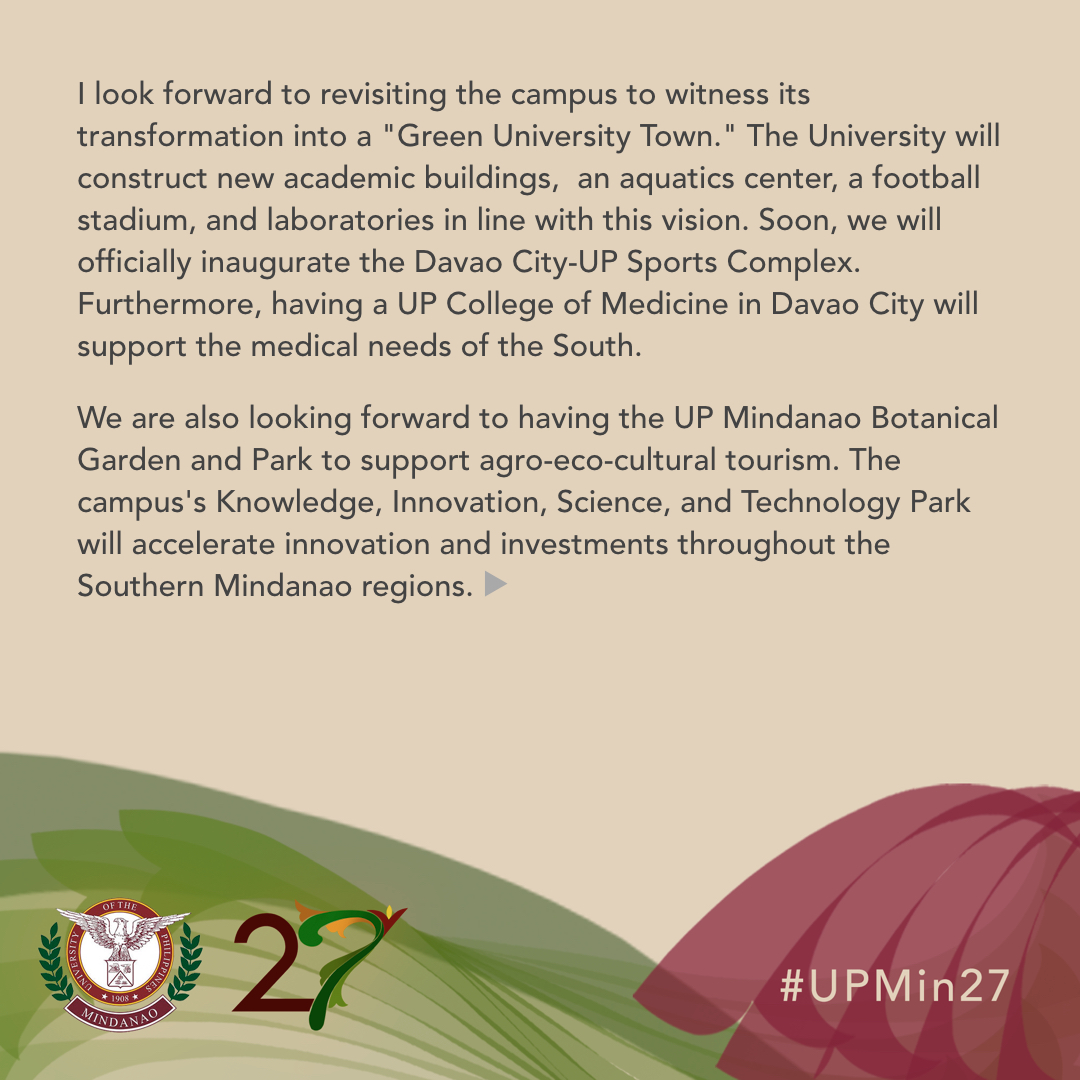 |
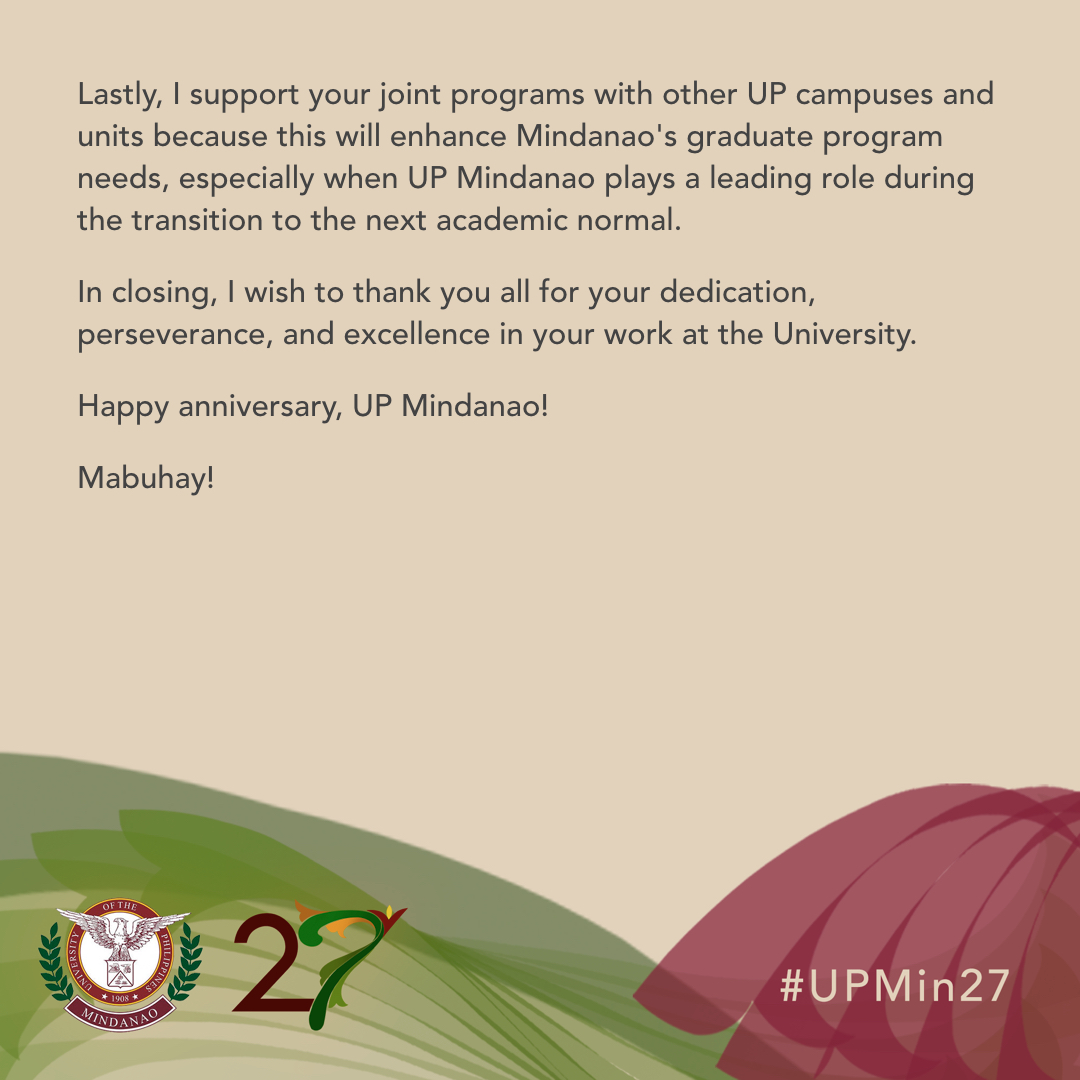 |
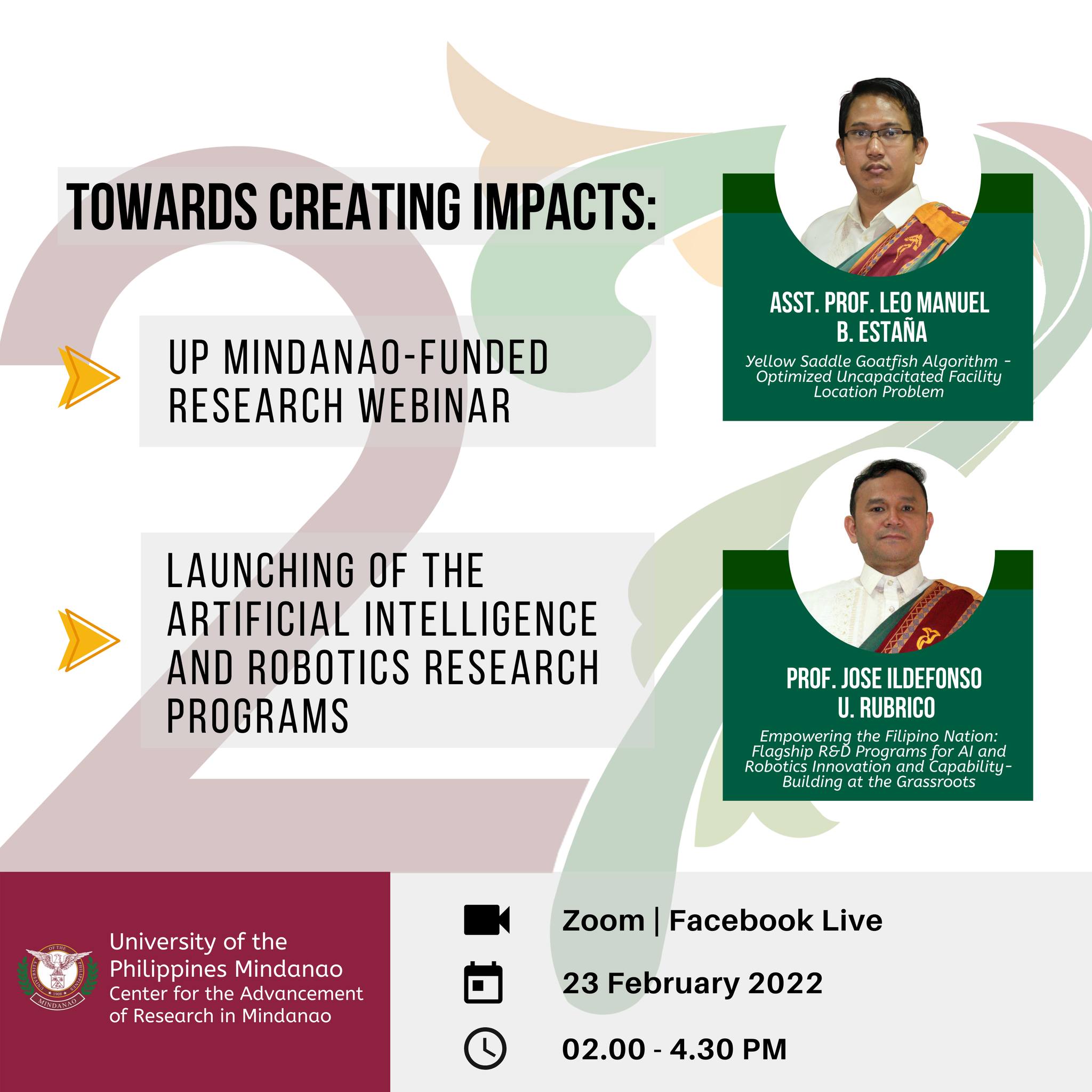 |
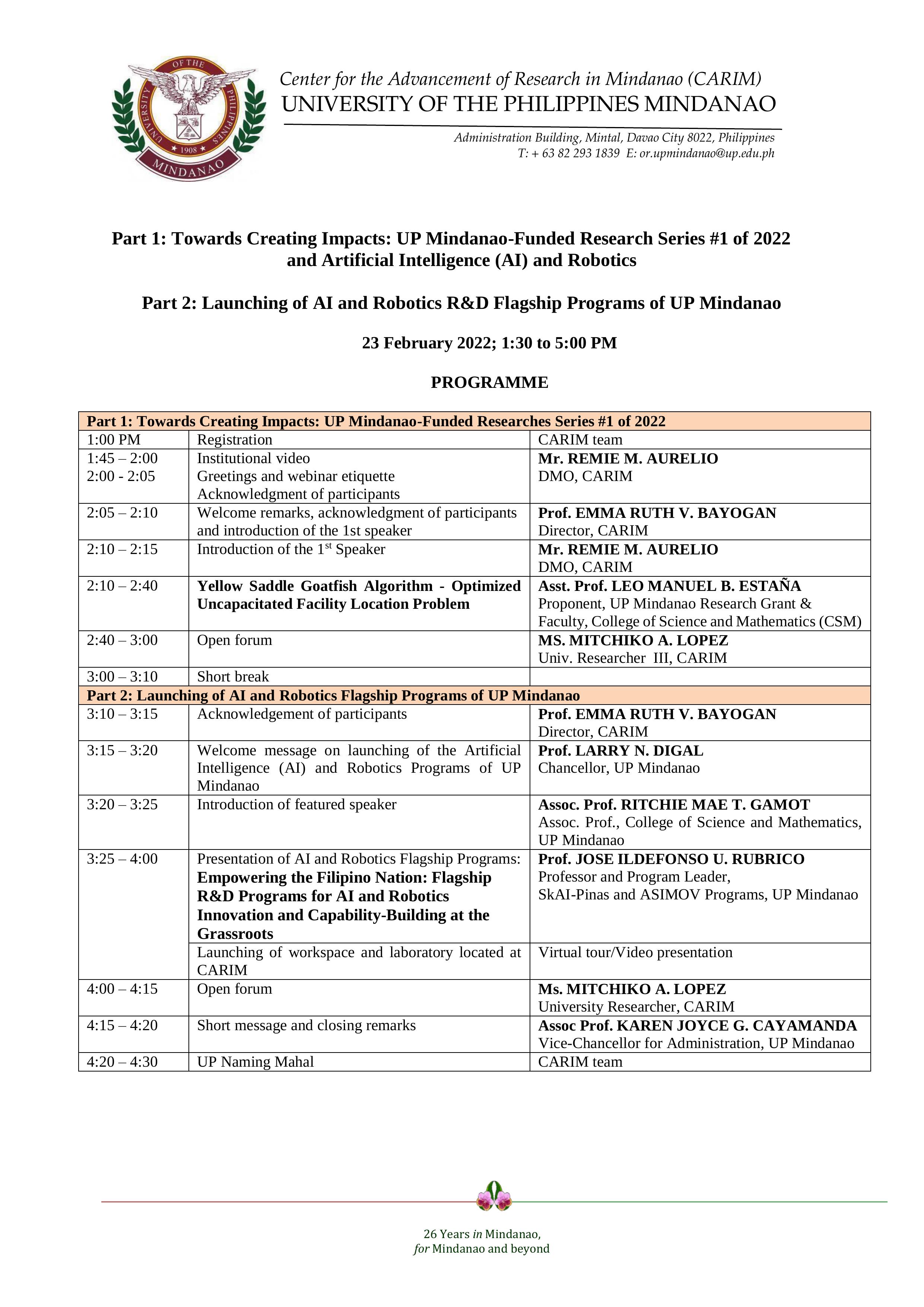 |
The UP Mindanao Center for the Advancement of Research in Mindanao (CARIM) invites the interested public to a webinar on 23 February 2022 (1:00 to 4:30 PM) as part of the 27th UP Mindanao Anniversary Celebration. Shown below are the two back-to-back events of the webinar:
 The University of the Philippines (UP) Mindanao will celebrate its 27th anniversary in 2022 with the theme, “Rising above disruptions: Sustaining the Culture of Excellence Towards the Next Normal.” UP Mindanao was created on 20 February 1995 with the signing of Republic Act 7889 by Philippine President Fidel V. Ramos during the term of UP President Emil Q. Javier. An online celebration will be held on 21 February 2022, 9 AM-12 NN, with UP President Danilo Concepcion as a guest speaker.
The University of the Philippines (UP) Mindanao will celebrate its 27th anniversary in 2022 with the theme, “Rising above disruptions: Sustaining the Culture of Excellence Towards the Next Normal.” UP Mindanao was created on 20 February 1995 with the signing of Republic Act 7889 by Philippine President Fidel V. Ramos during the term of UP President Emil Q. Javier. An online celebration will be held on 21 February 2022, 9 AM-12 NN, with UP President Danilo Concepcion as a guest speaker. 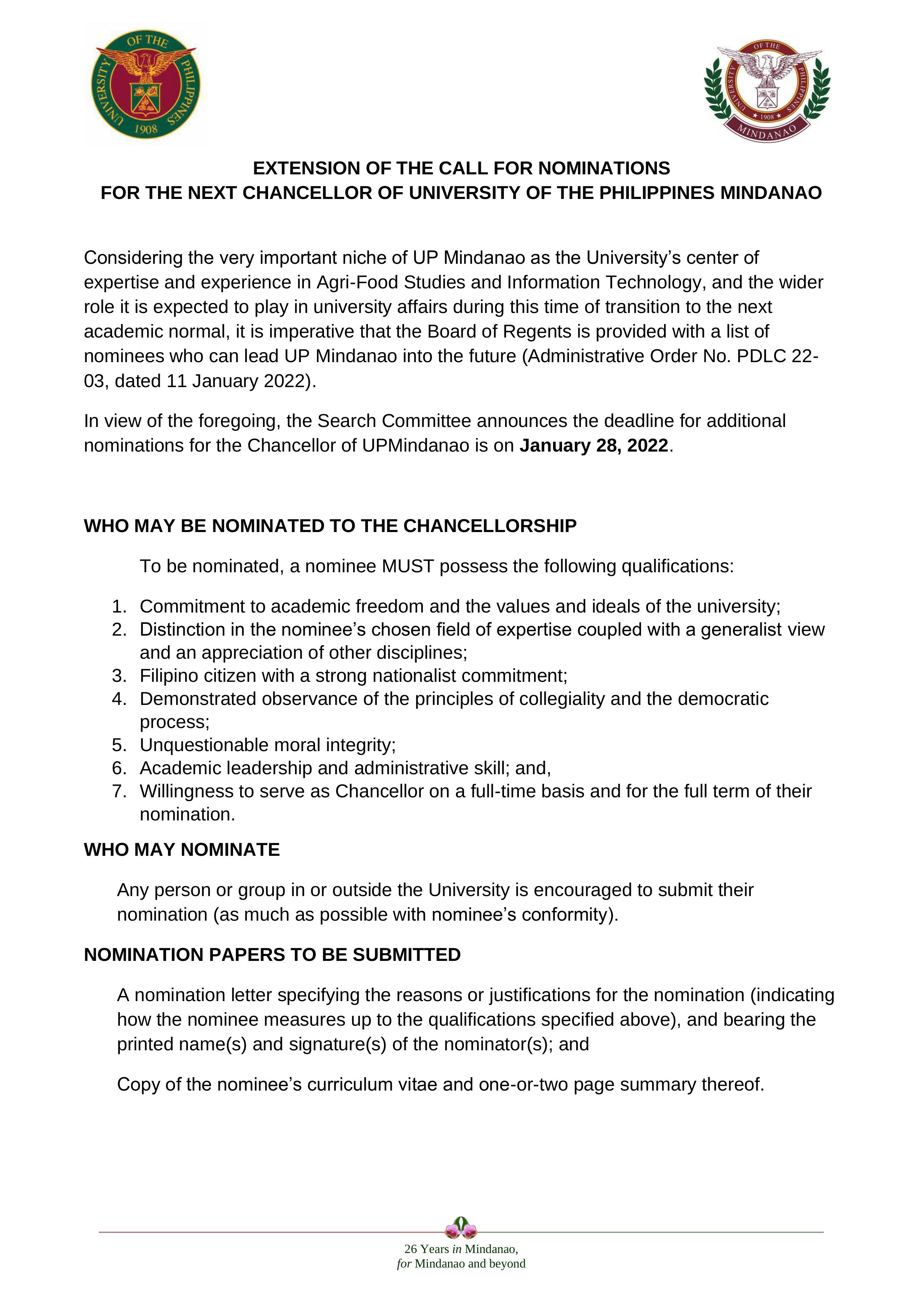 |
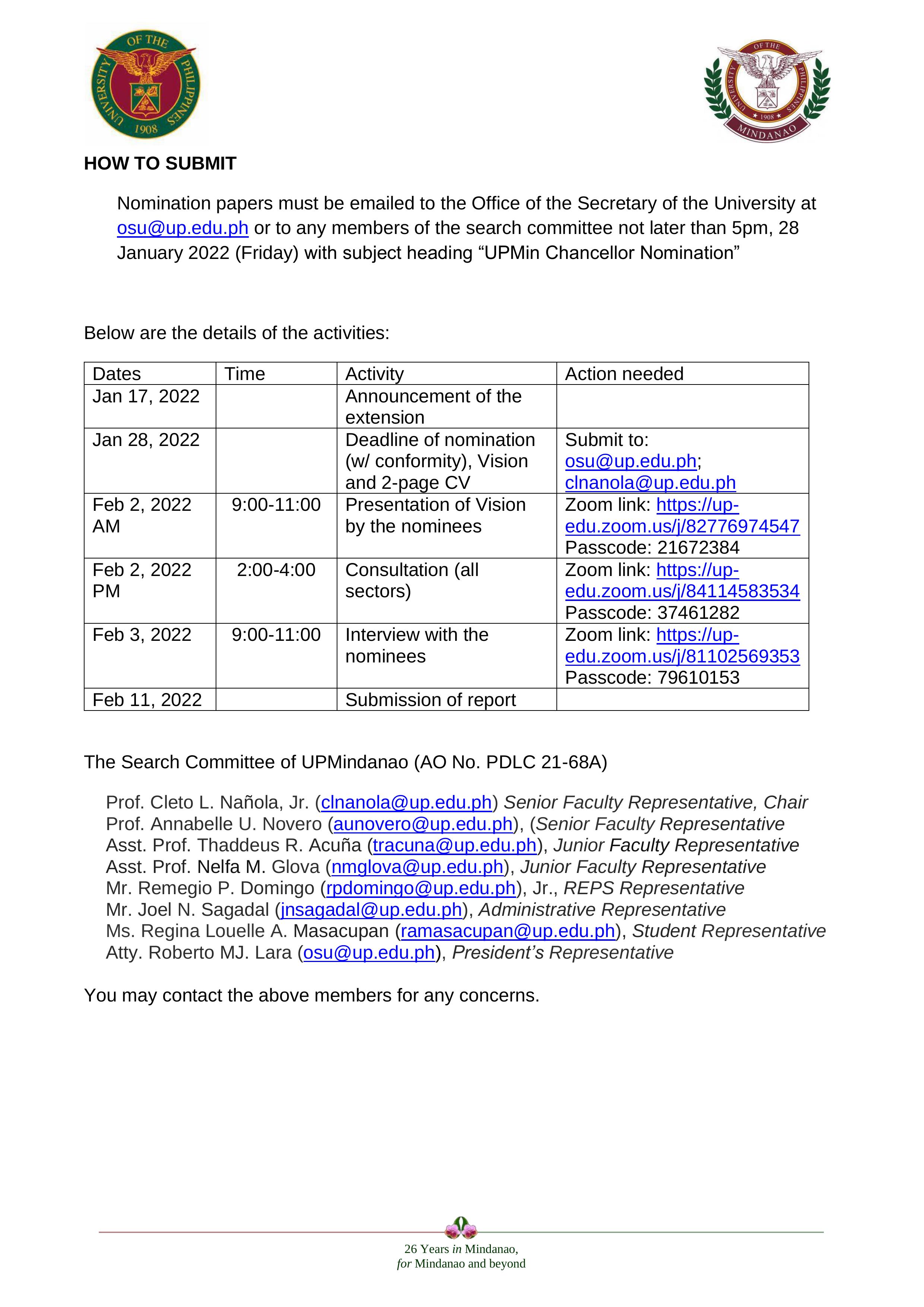 |
| Nomination form: https://bit.ly/3tXP4sy |
|
Read the Highlights of January 2022: https://drive.google.com/file/d/1gAJKfJHW3qRHK2Y8VW56e16R77pe7Avh/view?usp=sharing
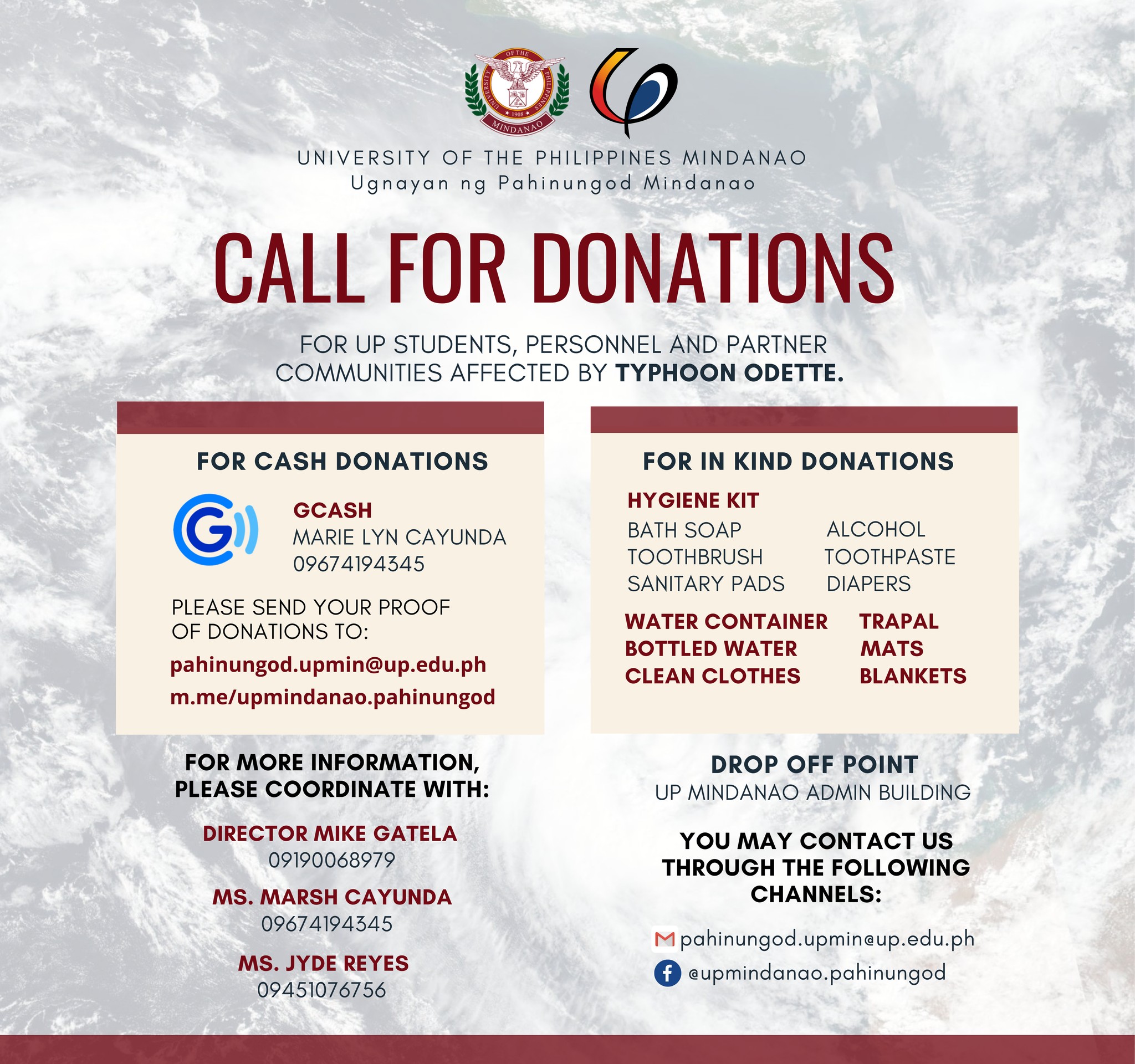
U P Mindanao Pahinungod is now accepting donations in cash and in-kind for students, staff, and partner communities affected by Typhoon Odette. More details on how to donate can be found on the poster.
|
|
 The continuing students of the Diploma in Urban and Regional Planning (DURP) invite the interested public to the Pakigduyog 2022 Special Lecture Series on Planning Workshop on 08 January 2022, Saturday, 9:00 a.m. to 12:00 noon via the Zoom meeting platform. Mr. Philip L.Anghag and Dir. Jennifer Bretana are the guest speakers who will talk about the relevant and timely issues on Land Use Planning in the Philippines. The continuing students of the Diploma in Urban and Regional Planning (DURP) invite the interested public to the Pakigduyog 2022 Special Lecture Series on Planning Workshop on 08 January 2022, Saturday, 9:00 a.m. to 12:00 noon via the Zoom meeting platform. Mr. Philip L.Anghag and Dir. Jennifer Bretana are the guest speakers who will talk about the relevant and timely issues on Land Use Planning in the Philippines.
Interested persons may gain access through the following steps:
1. Join the Pakigduyog 2022 | Special Lecture Series on Planning Workshop through the official hyperlink and official Zoom meeting platform link:
OR
Join Zoom Meeting
https://up-edu.zoom.us/j/83610357291
Meeting ID: 836 1035 7291
Passcode: durpp210.1
|
|
|
Please see the details below:
Zoom link: https://up-edu.zoom.us/j/5899117870
Meeting ID: 589 911 7870
Passcode: hrdo2022
|
|
Lock full review www.8betting.co.uk 888 Bookmaker